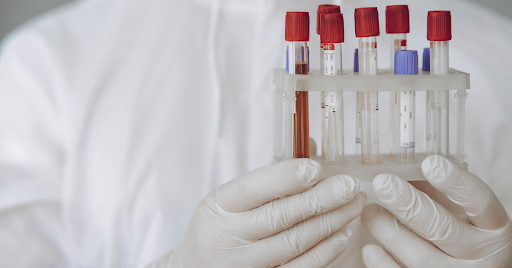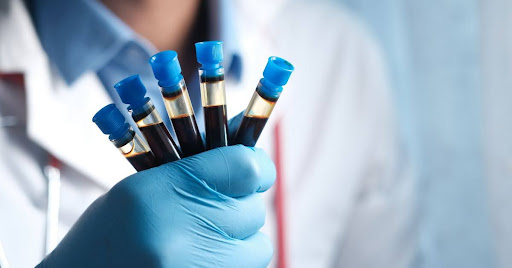VDRL Test: Purpose, Procedure & Meaning of Positive Result
2 min read
By DocGenie , Published on - 23 April 2025
The VDRL test—short for Venereal Disease Research Laboratory test—is a blood test primarily used to detect syphilis, a sexually transmitted infection caused by the bacterium Treponema pallidum. The test doesn’t directly identify the bacteria but checks for the body’s response to the infection. Quick, simple, and cost-effective, the VDRL blood test plays a crucial role in early diagnosis and prevention of serious complications.
What Is the VDRL Test Used For?

The VDRL test is an example of a non-treponemal test, meaning it detects antibodies produced in response to syphilis rather than the bacteria itself. These antibodies can also be present in other conditions, so further confirmation is usually required.
Common Uses:
- Screening for syphilis in both symptomatic and asymptomatic individuals
- Routine antenatal screening in pregnancy
- Pre-surgical procedures or STD screenings
- Monitoring the progress of syphilis treatment
What Is the VDRL Test in Pregnancy?

Pregnant women are often tested for syphilis using the VDRL test during their first prenatal visit.
Why It’s Important:
- Syphilis can be passed from mother to baby, causing congenital syphilis, a potentially life-threatening condition
- Early detection and treatment can prevent fetal complications
- It’s a routine part of prenatal care in many countries
So if you’re wondering, what is a VDRL test in pregnancy—it’s a proactive measure to protect both the mother and the unborn baby.
Understanding the Procedure: How Is the VDRL Blood Test Done?
The VDRL blood test is a simple, quick process:
Steps Involved:
- A blood sample is drawn from a vein in your arm
- The sample is sent to a laboratory for analysis
- Results are typically available within 1–2 days
In cases of suspected neurosyphilis, a cerebrospinal fluid (CSF) sample may be collected via lumbar puncture for testing.
What Do VDRL Positive Symptoms Look Like?
A positive VDRL test result doesn’t confirm syphilis but suggests the need for further testing (like an FTA-ABS test). Symptoms vary by stage:
Primary Stage:
- Painless sore or ulcer (chancre) at the infection site
- Usually heals within 3–6 weeks
Secondary Stage:
- Skin rashes
- Mucous membrane lesions
- Fever, swollen lymph nodes, sore throat, muscle aches
Latent and Tertiary Stage:
- No visible symptoms in the latent phase
- In tertiary stage, can affect heart, brain, and other organs if untreated
- If you're seeing VDRL positive symptoms, consult a healthcare provider for confirmation and treatment.
VDRL Test for Which Disease Exactly?
The VDRL test is used for the diagnosis of syphilis, but it's not exclusive to it.
Other Conditions That May Show False Positives:
- Pregnancy
- Viral infections (like HIV or hepatitis)
- Autoimmune diseases (like lupus)
- Tuberculosis
- Certain vaccinations
Hence, positive results are always followed by more specific tests for accurate diagnosis.
When Should You Get a VDRL Test?
You may need a VDRL test if you:
- Show symptoms of syphilis
- Have had unprotected sex or a new partner
- Are pregnant or planning pregnancy
- Are undergoing treatment for another STI
- Require pre-surgical or pre-employment screening



